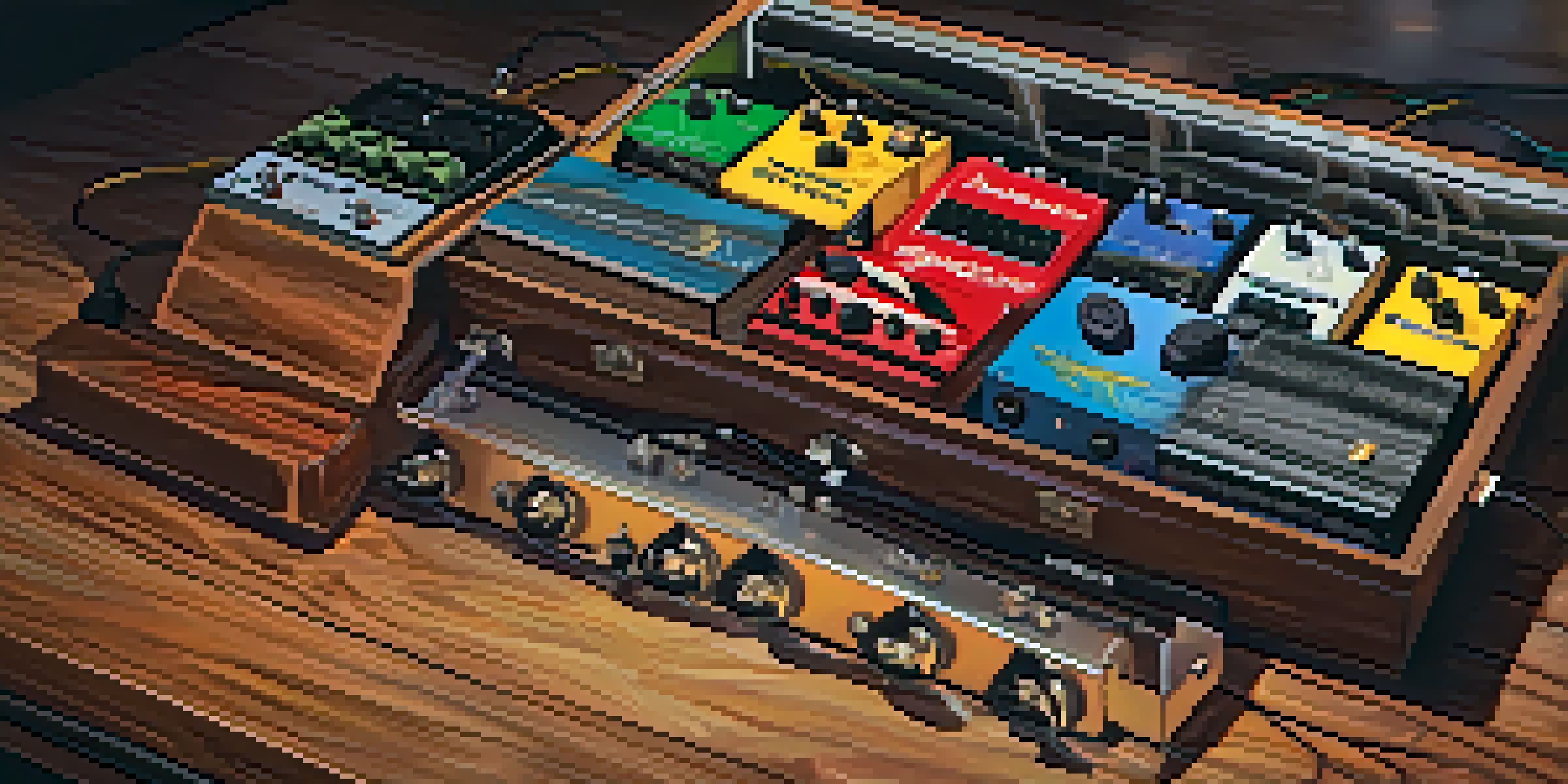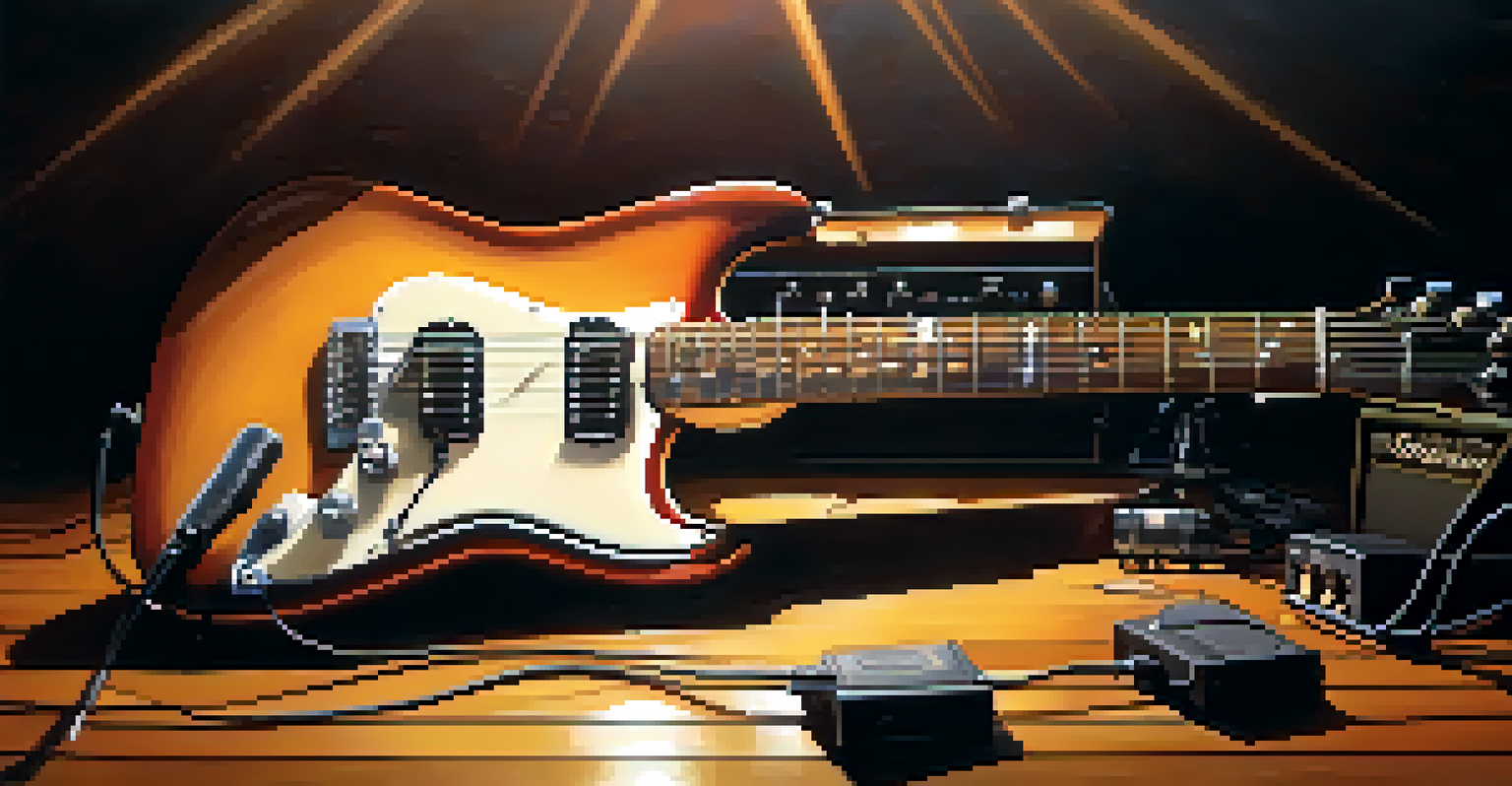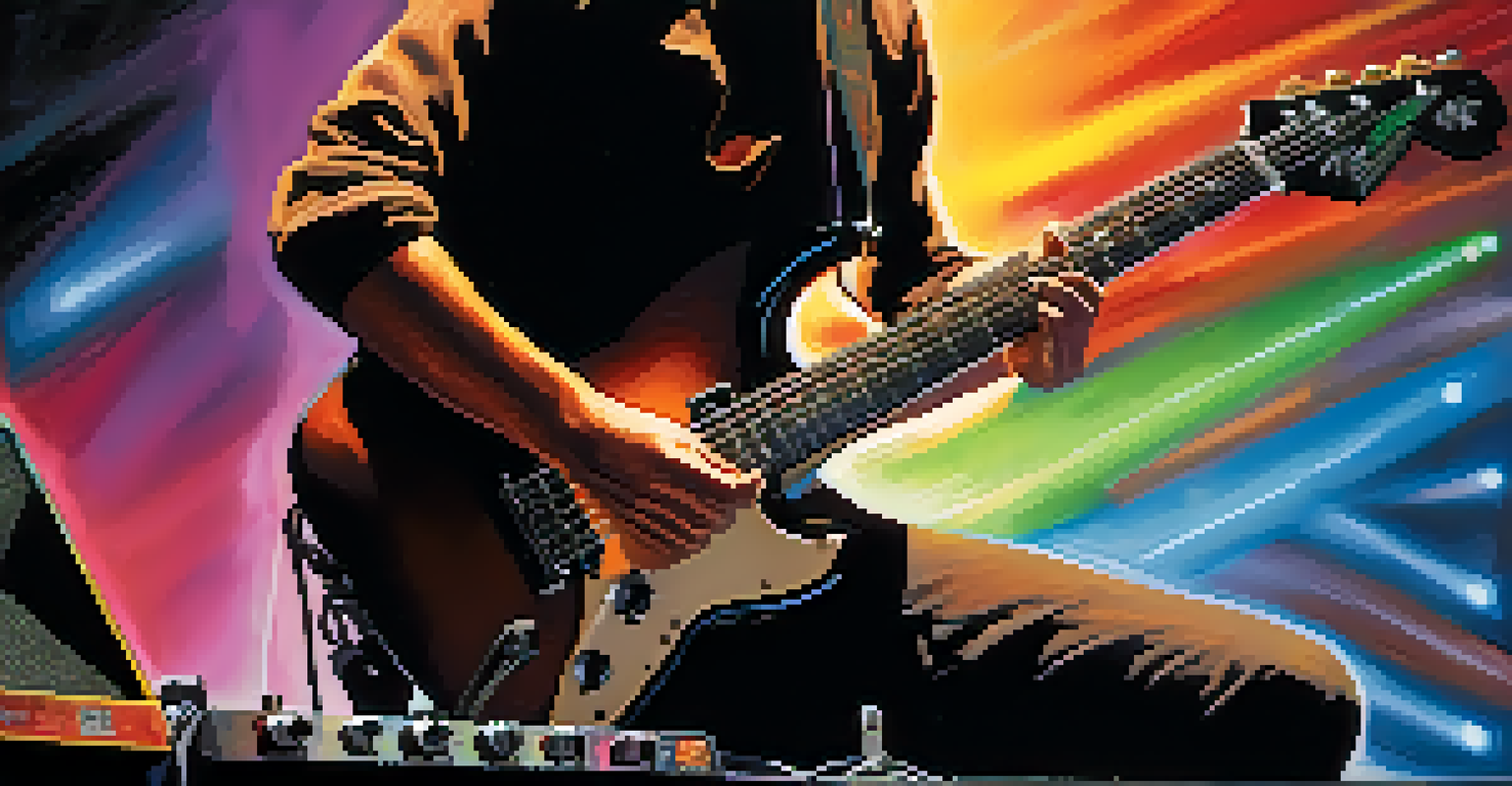The Ultimate Guide to Guitar Pedals: Effects for Every Style

Understanding Guitar Pedals: The Basics You Need to Know
Guitar pedals are essential tools that shape your sound, allowing you to explore various musical styles. Simply put, they are devices that alter the electric signal of your guitar, creating everything from subtle enhancements to dramatic effects. Whether you're an aspiring guitarist or a seasoned pro, knowing how these pedals work will open up a world of sonic possibilities.
The guitar is a miniature orchestra in itself.
Each pedal serves a specific purpose, whether it's adding distortion, reverb, or delay. For example, a distortion pedal can give your sound a gritty edge, perfect for rock and metal genres. Understanding their functions will help you choose the right pedals for your personal sound.
As you dive into the world of guitar pedals, keep in mind that experimentation is key. Try different combinations and settings to find what resonates with your style. No two guitarists are alike, and your unique sound is just waiting to be discovered!
Types of Guitar Pedals: A Breakdown of Categories
Guitar pedals can be categorized into several types based on their effects. The most common categories include distortion, overdrive, modulation, delay, and reverb. Each category has its own set of pedals designed to achieve specific sounds, making it essential to understand the differences.

For instance, distortion and overdrive pedals both add grit to your sound, but they do so in different ways. Distortion creates a more aggressive tone, while overdrive mimics the warm, natural breakup of a tube amp. Knowing these nuances will help you choose the right pedal for your style.
Guitar Pedals Shape Your Sound
Guitar pedals alter your guitar's electric signal, allowing for a wide range of musical styles and effects.
Additionally, modulation pedals like chorus and phaser add depth and texture to your sound, while delay and reverb pedals create space and ambiance. By familiarizing yourself with these categories, you can build a pedalboard that complements your musical preferences.
Essential Pedals for Rock Guitarists: Finding Your Sound
Rock guitarists often rely on a few essential pedals to create their iconic sounds. A distortion pedal is a staple, providing that crunchy, powerful tone that defines rock music. Pair it with an overdrive pedal for added warmth and sustain, and you’re well on your way to nailing those classic rock riffs.
Music can change the world because it can change people.
Another important pedal for rock is the delay, which adds depth to solos and fills. By adjusting the delay time and feedback, you can create everything from subtle echoes to dramatic sonic landscapes. Remember, the right settings can transform a simple melody into an unforgettable hook.
Don’t forget about modulation effects like chorus and flanger, which can add a lush quality to your sound. These pedals can help you achieve that rich, full tone that characterizes many rock anthems. With the right combination, you’ll be ready to rock the stage!
Exploring Blues Guitar Pedals: Crafting Your Tone
Blues guitarists often seek a warm, expressive tone that showcases their emotional playing. To achieve this, they typically rely on overdrive and fuzz pedals. An overdrive pedal can give you that smooth, creamy sound that complements soulful solos, while fuzz adds a gritty edge for more raw expression.
Additionally, a delay pedal can enhance your blues sound by creating a sense of space. A subtle delay adds depth to your playing, allowing notes to linger and resonate. When used correctly, the right delay setting can elevate your blues performance to new heights.
Types of Pedals Enhance Music
Understanding the different categories of pedals, such as distortion and modulation, helps you build a personalized sound.
Don’t underestimate the power of modulation effects like tremolo and vibrato. These pedals can add a touch of character and movement to your sound, making it more dynamic and engaging. Experimenting with these effects will help you find the perfect tone that embodies your blues style.
Acoustic Guitar Pedals: Enhancing Natural Sound
While electric guitarists may dominate the pedal scene, acoustic guitarists can also benefit from a variety of effects. For instance, reverb pedals are a favorite among acoustic players, as they add depth and create a sense of space, mimicking the sound of playing in a larger venue.
Another useful pedal for acoustic guitarists is the EQ (equalizer) pedal. This allows you to shape your sound by boosting or cutting specific frequencies, helping you achieve a clearer, more balanced tone. It’s particularly helpful in live settings where you need to adapt to different environments.
Lastly, consider using a compressor pedal to even out your dynamics. This effect can help maintain a consistent volume level, ensuring that your softer notes are heard without overpowering louder ones. By incorporating these pedals, you can enhance your acoustic sound without losing its natural charm.
Pedalboard Setup: Organization for Optimal Playability
Once you've chosen your pedals, organizing them on a pedalboard is crucial for optimal playability. The general rule of thumb is to place effects in the order of signal flow: from dynamics (compressors) to overdrives, and then modulation effects, followed by delays and reverbs. This arrangement will help you achieve the best sound quality.
Using a pedalboard not only keeps your effects organized, but it also makes setup and teardown easier. Investing in a quality pedalboard with power supply options can simplify your rig, allowing you to focus on what truly matters: your music.
Proper Pedalboard Setup Matters
Organizing your pedals in the correct order enhances playability and sound quality, making your setup more efficient.
Finally, don’t forget to experiment with the placement of your pedals. Sometimes, switching the order can yield surprising results. By taking the time to fine-tune your setup, you’ll create a unique sound that’s entirely your own.
Maintaining Your Guitar Pedals: Tips for Longevity
To ensure your guitar pedals last, regular maintenance is key. Start by keeping them clean and free from dust or debris, as this can affect their performance. A simple wipe down with a soft cloth after each gig can go a long way in preserving their longevity.
Additionally, be mindful of how you store your pedals. Extreme temperatures and humidity can damage internal components, so keep them in a climate-controlled environment when not in use. Investing in a sturdy case can also protect your pedals during transport.

Finally, don't hesitate to troubleshoot any issues. If a pedal isn’t functioning correctly, check the connections and power supply first. Many problems can be resolved with a little patience and investigation, ensuring your pedals remain in top shape for years to come.